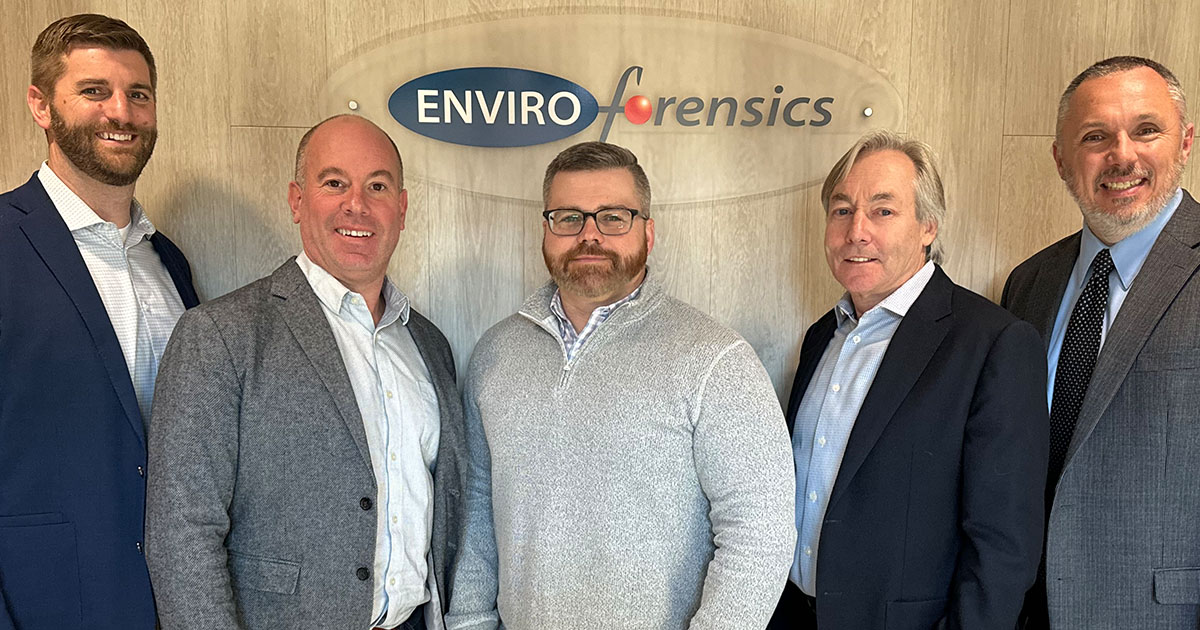BY: CASEY MCFALL, CHMM
You may (or may not) have heard of PFAS (per- and polyfluoroalkyl substances) and the recent U.S. EPA announcement designating two PFAS compounds as hazardous substances. There’s been a lot of doom and gloom posted about PFAS recently and while their hazardous substance designation will have effects that trickle down to commercial real estate, all is not lost. Below is a quick summary of what PFAS are and some immediate effects you may see in commercial real estate beginning July 8, 2024, when two (2) common PFAS compounds officially become hazardous substances.
WHAT ARE PFAS?
PFAS are a group of 9,000+ chemicals developed in the 1930s used in water-resistant textiles, paper products, non-stick coatings, and cleaning products. They are found in items like shampoo, cosmetics, non-stick cookware, stain-resistant or waterproofing products, fast food packaging, paints, and pesticides. Biosolids from sewer treatment plants, used as fertilizer, and aqueous film-forming foam (AFFF) used for fire suppression, can also contain PFAS. Electronic manufacturing and electroplating operations use PFAS too.
PFAS breaks down slowly in the environment, easily travel through groundwater, and can bioaccumulate in humans and animals. Research links PFAS exposure to health concerns in humans and animals.
REAL ESTATE IMPLICATIONS
Until recently, PFAS were regarded as emerging contaminants and were not officially listed as CERCLA hazardous substances. Two (2) common PFAS compounds (known as PFOA and PFOS) will become CERCLA hazardous substances on July 8, 2024. Below are four ways the hazardous substance designation of these PFAS compounds may affect commercial real estate transactions going forward.
- Environmental screening levels for PFAS are very low and PFAS may be found at lots of properties. Studies have shown that PFAS can cause issues at very low levels in the environment; for example, common petroleum compounds are assessed at a part-per-billion (ppb) level; PFAS compounds are assessed at a part-per-trillion (ppt) level, a thousand times lower. PFAS do not easily breakdown and can readily travel when they encounter groundwater. PFAS may be present at many properties, even if the historical or current operations may not have directly used PFAS. Types of businesses that may have PFAS impacts includes, but is not limited to laundromats, car washes, dry cleaners, airports, firefighting training facilities, electronic manufacturers, oil refineries, plastic and paper mills, landfills, metal platers, and any business where non-stick or waterproofing applications are applied.
- PFAS will now be a consideration in Phase I ESAs. Historically, PFAS were considered out-of-scope items for Phase I ESAs, as the ASTM standard only calls for assessing CERCLA hazardous substances and petroleum products. Beginning July 8, 2024, the PFAS compounds PFOA and PFOS will need to be assessed during Phase I ESAs.
- A current Phase I ESA may identify PFAS as an environmental concern at properties where historical Phase Is may have not identified environmental concerns. PFAS were used in many processes and operations that were previously not considered issues. For example, laundromats (with no dry cleaning operations) and farm fields may have environmental concerns due to PFAS, whereas they may not have had issues previously. Other facilities, such as dry cleaners or electroplating operations, may have identified environmental concerns in their past Phase I and Phase II ESAs, but those historical reports likely did not address PFAS.
- Cost for environmental sampling (i.e., Phase II ESAs) may increase. PFAS sampling techniques can require increased time and stringent procedures to ensure cross-contamination will not occur. Laboratories will also need to analyze PFAS samples at extremely low levels, which will likely increase analytical costs. For example, analysis of groundwater for dry cleaning compounds is roughly $80 – $100 per sample. Current groundwater analytical costs for a PFAS sample can start in the high $300s and go up from there.
The bottom line is that the impending designation of PFAS as a hazardous substance may have far-reaching effects in the environmental world; however, this does not mean the sky is falling. Property owners and prospective purchasers should be aware of these upcoming regulations and a trusted environmental consultant can help guide you through the next steps.
EnviroForensics has a proven track record of helping business owners through environmental investigations and cleanup, often while business goes on as usual. EnviroForensics may be able to help find historical insurance to fund the investigation or connect you with third parties who can manage environmental liabilities for property owners or even purchase contaminated properties.
If you have questions regarding PFAS or any other environmental matter, please contact us at your convenience.
Casey McFall is the Director of Real Estate Services and Senior Scientist for EnviroForensics, LLC. Mr. McFall can be reached at 463-212-1815 or via email at cmcfall@enviroforensics.com.



